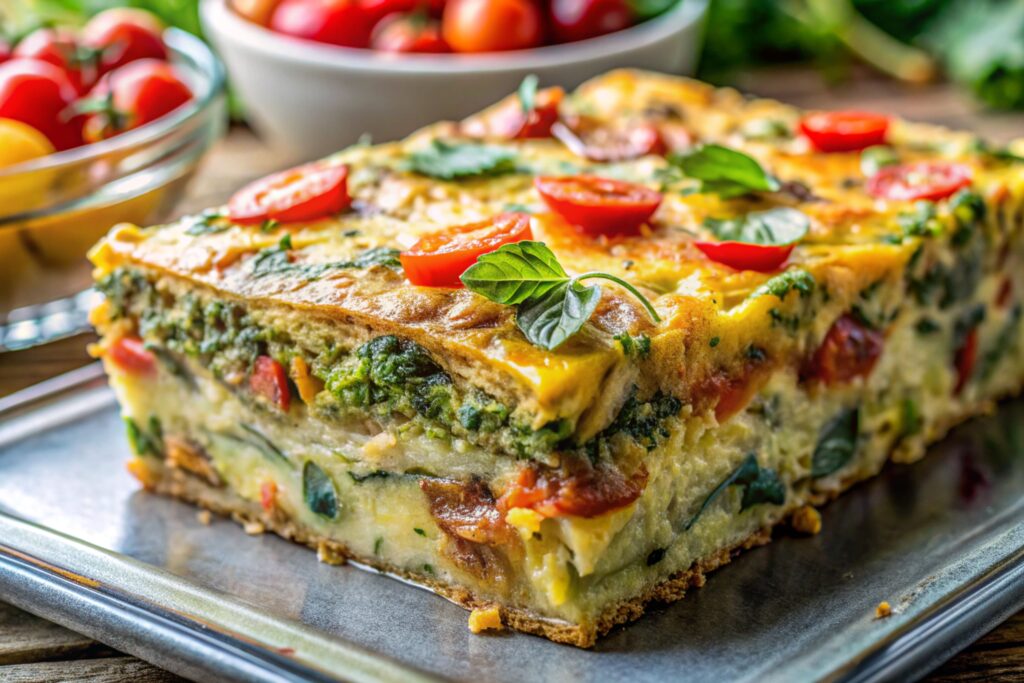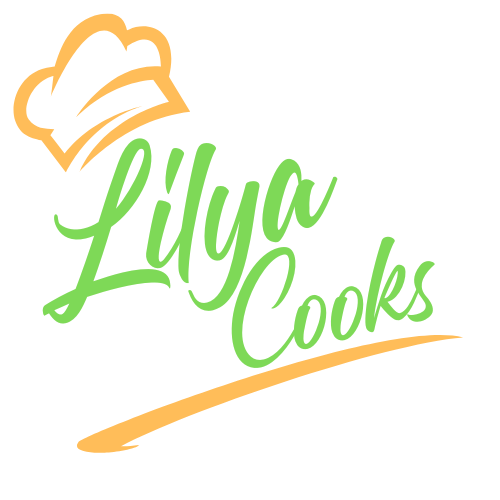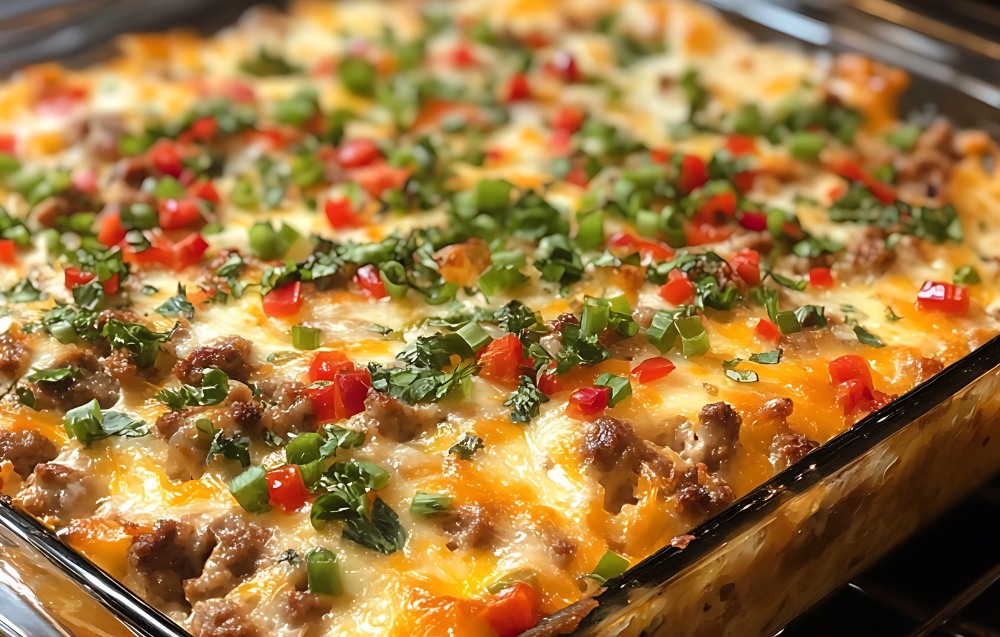Have you ever woken up craving a hearty breakfast but also wanting to stay on the healthy side? A gluten-free breakfast casserole might be just what you need. It’s the perfect mix of flavor, nutrition, and convenience all wrapped up in one dish. Whether you’re someone with a gluten intolerance or just looking to try something new, this dish is a winner.
In this guide, I’ll walk you through everything you need to know about crafting the perfect gluten-free breakfast casserole. Ready to dig in? Let’s get started!
What Is a Gluten-Free Breakfast Casserole?
Gluten-free breakfast casseroles are hearty, wholesome dishes packed with nutrient-rich ingredients and made without any gluten-containing grains like wheat, barley, or rye. Think of them as the ultimate breakfast solution — easy to make, customizable, and great for meal prepping. They’re like a warm hug in a dish, especially on those busy mornings when you need a nutritious meal to keep you energized.
To further explore ingredient choices for gluten-free baking, check out this guide to artisan Italian bread, which highlights gluten-free-friendly options.
Understanding Gluten-Free Diets and Their Benefits
Following a gluten-free diet isn’t just a necessity for those with celiac disease or gluten sensitivities—it’s becoming a lifestyle choice for people aiming to improve their digestion and overall health. Gluten-free breakfast casseroles cater to these needs without sacrificing flavor or satisfaction.

For an adventurous twist on gluten-free breakfast casseroles, why not try incorporating ideas from recipes like Jimmy Dean breakfast sandwich alternatives? It’s a fun way to customize your morning meals.
The Role of Breakfast Casseroles in Meal Planning
Casseroles are like the superheroes of meal prep. Need something quick for the kids? Casserole. Hosting a brunch? Casserole. Want leftovers for the week? You guessed it — casserole! A gluten-free breakfast casserole takes it one step further by ensuring everyone at the table, regardless of dietary restrictions, can enjoy it.
Plus, they’re ridiculously easy to make. Combine your ingredients, pop them in the oven, and let it do all the work. If that’s not a win, I don’t know what is!
To plan other creative dishes, consider pairing your casserole with ideas from The Best Cheese for Mac and Cheese, which explores flavor profiles that work wonderfully in savory recipes.
Essential Ingredients for a Gluten-Free Breakfast Casserole
The beauty of this dish lies in its flexibility. You can adapt it to suit your taste buds while keeping it completely gluten-free. Here are some must-have ingredients:
Choosing the Right Gluten-Free Grains
The base of your casserole sets the stage for the whole dish. Instead of wheat-based products, try:
- Potatoes: Shredded or diced, they create a hearty, satisfying foundation.
- Gluten-Free Bread: Cube it up for a fluffy, bread-pudding-like texture.
- Quinoa or Rice: These gluten-free grains add a nutty flavor and extra protein.
For more gluten-free inspiration, check out The Best Pasta for Mac and Cheese, which dives into alternative grain options.
“When life gives you dietary restrictions, turn them into culinary adventures. Gluten-free grains like quinoa can transform your casseroles into protein-packed delights!”
Protein Options: Meat, Vegetarian, and Vegan Choices
Protein is the star of the show. Not only does it keep you full longer, but it also adds a burst of flavor. Consider these options:
- Meat: Sausage (make sure it’s gluten-free), chicken, or turkey.
- Vegetarian: Try tofu crumbles, black beans, or even roasted chickpeas for a plant-based twist.
- Eggs: A breakfast casserole isn’t complete without them! They bind everything together and add a creamy texture.
To explore more flavor pairings, visit What Goes Well with Brisket Sandwiches.
Enhancing Flavor with Dairy-Free and Gluten-Free Additions
Cheese lovers, rejoice! Many cheeses are naturally gluten-free, but if you’re dairy-free, there are amazing alternatives out there:
- Dairy-Free Cheese: Cashew or almond-based cheese can work wonders.
- Gluten-Free Milk Alternatives: Almond milk, oat milk (certified gluten-free), or coconut milk add a rich creaminess.
Spices like paprika, garlic powder, and Italian seasoning also take the flavor to the next level.
For expert tips on adding flavor to dishes, read The Secret Ingredient in a Philly Cheesesteak.
How to Make a Perfect Gluten-Free Breakfast Casserole
Let’s get to the heart of it: making this delicious dish. It’s not rocket science, but a few key steps can make all the difference.
Step-by-Step Preparation Guide
- Preheat Your Oven: Start by setting it to 350°F (175°C).
- Prep Your Ingredients: Chop veggies, cook your meat, and shred cheese.
- Layer It Up: Begin with a base layer (potatoes or grains), followed by veggies, protein, and cheese.
- Pour the Egg Mixture: Beat eggs with a splash of milk (or milk alternative) and pour it evenly over the top.
- Bake: Pop it in the oven for 35–40 minutes, or until the top is golden and the casserole is set.
Common Mistakes to Avoid When Cooking Gluten-Free
We’ve all been there — the casserole didn’t quite turn out how we imagined. Here are some common pitfalls to avoid:
- Overloading with Veggies: While veggies are great, too many can make your casserole watery.
- Skipping the Seasoning: A bland casserole is a sad casserole. Don’t skimp on spices.
- Not Greasing the Pan: Trust me, you don’t want to scrape burnt bits off your dish later.
For additional culinary guidance, check out How to Make a Cookie Cake to see how precision transforms recipes.
Tips for Achieving the Best Texture and Taste
- Drain Excess Water: If you’re using veggies like zucchini or spinach, squeeze out the moisture first.
- Use Fresh Ingredients: It makes all the difference in taste.
- Let It Rest: After baking, let your casserole cool for a few minutes. It helps everything set and makes slicing easier.
“A gluten-free breakfast casserole isn’t just food; it’s a celebration of flavors, textures, and creativity. Master the art, and you’ll never look at breakfast the same way again!”
Popular Variations of Gluten-Free Breakfast Casseroles
One of the best things about breakfast casseroles is how versatile they are. You can switch up the ingredients to suit your mood, season, or dietary preferences. Let’s explore some mouthwatering variations that will have everyone asking for seconds.
Vegetarian Gluten-Free Breakfast Casseroles
Looking for a meat-free option? No problem! Vegetarian casseroles can be just as filling and flavorful. Try these combinations:
- Spinach and Feta: Use gluten-free bread or quinoa as a base and layer with spinach, feta cheese, and sun-dried tomatoes.
- Mushroom and Swiss Cheese: Sauté mushrooms with garlic and onion for a savory, umami-packed dish.
- Roasted Veggie Delight: Toss bell peppers, zucchini, and sweet potatoes in olive oil and roast them before adding to your casserole.
For more ideas on plant-based eating, check out What Does Gluten-Free Really Mean? and discover how gluten-free diets intersect with vegetarian lifestyles.
High-Protein and Low-Carb Options
If you’re watching your carbs but still want a hearty breakfast, these variations are perfect:
- Egg and Sausage Casserole: Use diced potatoes as a base and load up on gluten-free sausage, eggs, and cheese.
- Keto Veggie Casserole: Replace potatoes with cauliflower rice and add in eggs, spinach, and shredded cheddar.
- Chicken and Broccoli Bake: Shred cooked chicken and pair it with steamed broccoli for a protein-rich option.
For tips on balancing nutrition in recipes like these, visit Healthy Breakfast Cooking Tips to learn how to make breakfast both nutritious and delicious.
“Who says healthy can’t be delicious? A high-protein breakfast casserole is like fuel for your body, keeping you energized all day long.”
Seasonal and Holiday-Themed Recipes
Want to bring some festive flair to your table? These seasonal twists will make your casseroles a showstopper:
- Spring Veggie Medley: Incorporate asparagus, peas, and leeks for a fresh, vibrant dish.
- Autumn Harvest: Use butternut squash, cranberries, and a hint of nutmeg to celebrate fall flavors.
- Holiday Feast Casserole: Combine turkey, gluten-free stuffing, and green beans for a Christmas morning treat.
Troubleshooting Common Problems in Gluten-Free Casseroles
Even with the best intentions, things can sometimes go wrong in the kitchen. Don’t worry — I’ve got you covered with solutions to the most common issues.
Why Does My Casserole Turn Out Too Dry?
A dry casserole can ruin the meal, but it’s an easy fix! Here’s what might be going wrong:
- Not Enough Liquid: Make sure your egg mixture covers all the ingredients.
- Overcooking: Keep an eye on the bake time, as too long in the oven can zap moisture.
- Ingredient Ratios: If you’re using a lot of dense ingredients (like potatoes or meat), balance them with more eggs or milk.
Solution: Add an extra egg or a splash of milk to the mixture before baking. If it’s already baked, a dollop of sour cream or gluten-free gravy on top can save the day.
For more inspiration on swapping dairy-based ingredients, explore Dairy-Free Alternatives to Use in Your Recipes to find the perfect additions to your casserole.
Solving Issues with Soggy or Undercooked Casseroles
Nobody likes a casserole that’s more soup than solid. Here’s how to avoid this problem:
- Excess Moisture: Some veggies release a lot of water as they cook (looking at you, zucchini). Squeeze or roast them beforehand.
- Underbaking: Use a toothpick to check the center. If it comes out wet, give it more time in the oven.
Solution: If it’s already baked and soggy, try reheating individual portions in a skillet to crisp them up.
Managing Ingredient Substitutions for Allergies
Cooking for someone with multiple dietary restrictions? It’s easier than you think to adjust the recipe:
- Dairy-Free: Swap cheese with dairy-free alternatives and use almond or oat milk.
- Nut-Free: Stick with coconut milk or rice milk instead of nut-based options.
- Egg-Free: Use a flaxseed or chia seed mixture (1 tablespoon seed + 2.5 tablespoons water per egg).
“Cooking for dietary needs is like solving a puzzle — challenging but so rewarding when you see everyone enjoy the meal!”
Storing and Reheating Gluten-Free Breakfast Casseroles
One of the biggest perks of breakfast casseroles is how well they store. Whether you’re meal prepping or saving leftovers, proper storage can make all the difference.
Proper Storage Techniques for Freshness
Follow these tips to keep your casserole tasting as good as the day you made it:
- Refrigerator: Let the casserole cool completely, then cover it tightly with plastic wrap or aluminum foil. It’ll stay fresh for 3–4 days.
- Freezer: Slice the casserole into portions, wrap each one in plastic wrap, and store them in a freezer-safe container. They’ll last up to 3 months.
Pro Tip: Label your containers with the date so you don’t forget when you made it!
Reheating Tips for Retaining Flavor and Texture
Reheating a casserole can be tricky — you want it warm without drying it out. Here’s how to do it right:
- Microwave: Place a slice on a microwave-safe plate, cover it with a damp paper towel, and heat in 30-second intervals.
- Oven: Cover the dish with foil and bake at 350°F (175°C) for 15–20 minutes until heated through.
- Skillet: For a crispy bottom, reheat individual portions in a non-stick skillet over medium heat.
“Leftovers don’t have to be boring! With the right reheating techniques, your casserole will taste just as good (if not better) the next day.”
The Nutritional Value of Gluten-Free Breakfast Casseroles
When done right, a gluten-free breakfast casserole is not just a feast for your taste buds but also a powerhouse of nutrients. Whether you’re looking to fuel up for a busy day or keep your diet on track, this dish checks all the boxes.
Balancing Macronutrients for a Healthy Breakfast
A well-rounded casserole combines all the essential macronutrients: protein, carbs, and healthy fats. Here’s how each plays its part:
- Protein: Eggs, meat, and plant-based options like tofu or beans help build and repair muscles.
- Carbohydrates: Gluten-free grains or potatoes provide the energy you need to jumpstart your morning.
- Fats: Cheese, dairy alternatives, or avocado add richness and keep you feeling full longer.
“A gluten-free breakfast casserole isn’t just food; it’s a carefully balanced start to your day that feels indulgent but is packed with nutrition.”
Incorporating Superfoods for Added Benefits
Want to take your casserole to the next level? Add some of these superfoods for a nutritional boost:
- Spinach: Packed with iron and vitamins, spinach is a simple way to up the health factor.
- Sweet Potatoes: A great source of fiber and antioxidants, they’re a tasty alternative to regular potatoes.
- Chia Seeds: Sprinkle them in for a dose of omega-3s and fiber.
By including these ingredients, you’ll create a casserole that’s not only delicious but also incredibly good for you.
Gluten-Free Breakfast Casserole Meal Prep Ideas
Meal prepping can save time and reduce stress during your busy week. With a little planning, your breakfast casseroles can become your go-to solution for hectic mornings.
Make-Ahead Recipes for Busy Mornings
Life gets busy, but that doesn’t mean breakfast has to suffer. Here’s how to stay ahead of the game:
- Prep the Night Before: Assemble your casserole, cover it, and leave it in the fridge overnight. In the morning, just bake and enjoy.
- Use Single-Serving Containers: Bake your casserole in muffin tins for portable, grab-and-go breakfasts.
- Double the Recipe: Make two casseroles at once — one for now and one for later. Trust me, you’ll thank yourself!
Freezer-Friendly Options for Long-Term Storage
If you love to batch-cook, casseroles are perfect for freezing. Here’s how to make it work:
- Cool Completely: Let the casserole cool to room temperature before slicing or storing.
- Portion It Out: Cut into individual servings for easier thawing.
- Wrap and Seal: Use plastic wrap and an airtight container to prevent freezer burn.
To reheat, thaw overnight in the fridge and warm in the oven or microwave. It’s that easy!
“Think of your freezer as your personal breakfast buffet — always ready with your favorite gluten-free casserole.”
How to Serve Gluten-Free Breakfast Casseroles
You’ve put in the work, and now it’s time to serve your masterpiece. But why stop at just the casserole? Pairing and presentation can make your meal even more enjoyable.
Pairing Ideas for a Complete Breakfast Spread
Make your casserole the centerpiece of a well-rounded breakfast by adding complementary sides:
- Fresh Fruit: A bowl of berries or sliced melon adds a refreshing, sweet contrast.
- Gluten-Free Toast: Serve with a dollop of jam or avocado for a touch of indulgence.
- Smoothies: A nutrient-packed smoothie can balance the richness of the casserole.
Presentation Tips to Wow Your Guests
A little effort goes a long way in impressing your family or friends. Here’s how to make your casserole look as good as it tastes:
- Garnish It: Sprinkle chopped parsley, chives, or shredded cheese on top for a pop of color.
- Use a Decorative Dish: Bake and serve in a colorful or rustic casserole dish for extra charm.
- Serve Buffet-Style: Arrange a variety of toppings and sides so everyone can customize their plate.
“We eat with our eyes first, so don’t underestimate the power of presentation. A beautiful casserole can turn an ordinary breakfast into a memorable event.”
Final Thoughts: The Versatility of Gluten-Free Breakfast Casseroles
Whether you’re a meal-prep enthusiast, a busy parent, or just someone who loves a good breakfast, gluten-free breakfast casseroles are a game-changer. They’re easy to make, endlessly customizable, and perfect for sharing with family and friends. Plus, they cater to a variety of dietary needs without sacrificing flavor or satisfaction.
Why Everyone Should Try a Gluten-Free Breakfast Casserole
Even if you don’t follow a strict gluten-free diet, these casseroles are worth a try. They’re a great way to explore new ingredients, expand your culinary skills, and start your day on a healthy note.
So, why not give it a shot? Experiment with different ingredients, try new flavors, and make the recipe your own. Before you know it, the gluten-free breakfast casserole might just become your signature dish.
“The joy of cooking lies in the freedom to create. A gluten-free breakfast casserole isn’t just a recipe — it’s an invitation to experiment, savor, and share.”

